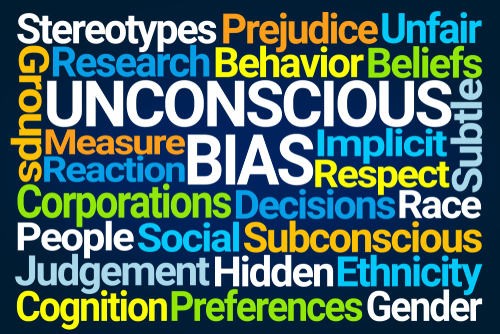When it comes to hiring, companies want to make the best decisions for their business by finding the most qualified candidates who will succeed in the role and contribute to the company’s bottom line. However, unconscious bias can often creep into the hiring process, leading to subpar candidates being hired or qualified candidates being overlooked.
This unconscious bias can lead to hiring decisions based not on merit or qualifications but on factors such as race, gender, or ethnicity. The result? A less diverse workforce and failure to reflect the company’s customer base.
Intelligent automation (IA) can help create a more equitable hiring process by reducing the reliance on human decision-making. By using algorithms to screen candidates, rate their qualifications, and select the most qualified candidates for interviews, IA allows companies to avoid the pitfalls of unconscious bias and create a more diverse and representative workforce.
What Are IA and Unconscious Bias?
IA combines advanced technologies such as artificial intelligence, prescriptive analytics, robotic process automation, intelligent document processing, and process and task mining to create digital workers, or bots, to support decision-making. Examples include data-driven processes using unstructured data, such as analyzing and classifying candidates’ résumés and CVs and making decisions or recommendations about whom to interview.
Unconscious bias is how personal beliefs and prejudices influence hiring managers’ decision-making. These biases are often based on gender, race, ethnicity, or age and can lead to an unfair hiring process. These unconscious biases make it harder for talented candidates to get a fair shot in the hiring process.
How Can IA Reduce Unconscious Bias in the Hiring Process?
There are several ways IA can reduce unconscious bias when hiring people:
- Find a broader pool of candidates: IA can automate candidate sourcing by scraping databases to find ideal candidates for vacant positions. It can also handle the flood of applicants for any given job. The Harvard Business Review says every online job posting receives an average of 250 applicants. Recruiters can’t manually handle this many résumés themselves, so they tend to whittle them down to the 10%–20% they can handle, usually focusing on Ivy League degrees, employees of competitors, and employee referrals. Through IA, digital workers can help avoid the issue of recruiters’ being unable to read every application.
- Create a more standardized process: Inconsistency in hiring can amplify unconscious bias. IA can help create a more standardized process by ensuring all candidates are treated the same and each step in the process is followed correctly, as digital workers are always perfectly compliant with company policy. Examples include automated job postings, tracking applications through the hiring pipeline, and running automatic background checks.
- Use data to drive decisions: IA can provide access to otherwise unavailable data—for instance, data sets too large for human workers to review. This data can be used to analyze previous hires, discern patterns, and suggest corrections to the process. It can also help drive hiring decisions and ensure candidates are selected based on their qualifications, not a personal bias.
Benefits of Reducing Unconscious Bias
Reducing unconscious bias in the hiring process can benefit an organization in many ways, including:
- Create a more diverse workforce: A more diverse workplace is not just good sense; it’s also good business. Greater diversity enhances creativity, drives innovation, and helps companies grow. For example, the Boston Consulting Group reported more diverse management teams led to 19% higher revenues than companies with less diverse leadership.
- Reduce turnover: Employees who feel they were hired relatively and without bias are more likely to be satisfied with their job and less likely to leave the company. By reducing unconscious bias in the hiring process, companies can reduce employee turnover and save on costs associated with recruiting and training new employees.
- Improve the bottom line: Workplace disputes often rooted in unconscious bias cost the U.S. economy approximately $359 billion annually. In addition, outright discrimination adds another $64 billion to the tab every year. Taken together, allowing unconscious bias in your hiring process proves costly.
More needs to be done to promote equity in your average hiring process. However, IA can be a powerful tool in reducing unconscious bias by allowing hiring managers to focus on the essential criteria for the role rather than allowing personal biases to influence their decision-making.
Lou Bachenheimer, PhD, CTO, is a Director of Solution Architecture at SS&C Blue Prism
The post Eliminating Unconscious Bias in Your Hiring Process appeared first on HR Daily Advisor.
